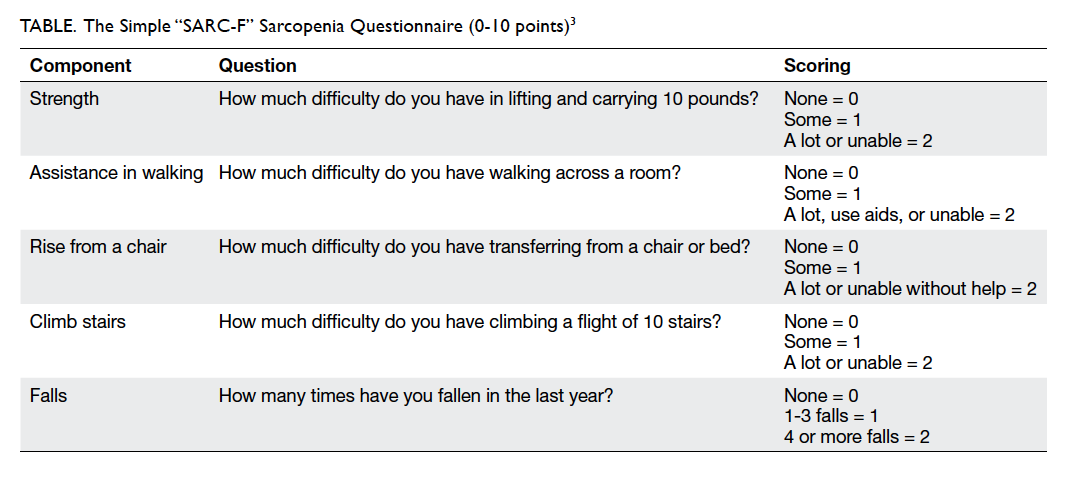DOI: 10.12809/hkmj164866
© Hong Kong Academy of Medicine. CC BY-NC-ND 4.0
LETTER TO THE EDITOR
A few seconds to screen for sarcopenia
Martin Hofmeister, PhD
Consumer Centre of the German Federal State of Bavaria, Department Food and Nutrition, Mozartstraβe 9, D-80336 Munich, Germany
Corresponding author: Dr Martin Hofmeister (hofmeister@vzbayern.de)
To the Editor—I thank Ho et al1 for their very
interesting article “Prevalence of pre-sarcopenia and
sarcopenia in Hong Kong Chinese geriatric patients
with hip fracture and its correlation with different
factors” in the February 2016 issue of the Hong Kong
Medical Journal. I would like to mention another
recent sarcopenia study in elderly Chinese men and
women with a mean age of 81 years. The research
group led by Hong et al2 showed that 42% of female
patients and 84% of male patients with hip fracture
were sarcopenic. In this study, the prevalence of
sarcopenia with vertebral fracture was 34% in
women and 40% in men. I agree with the authors
that screening measures should be implemented
more.1 In a general practice setting, measurement
of SARC-F sarcopenia scale is feasible, simple, quick
and inexpensive, and does not expose the patient
to any particular strain (Table).3 The scale has also
been evaluated in elderly patients in Hong Kong
with direct measurement of muscle mass, strength,
and physical performance.4 5 If a SARC-F score of ≥4 has been measured in an older patient, diagnosis
of sarcopenia can be substantiated rather quickly.3
In my opinion, the SARC-F screen for sarcopenia
should be routinely carried out among the Chinese
elderly population every time they consult their
doctor.
References
1. Ho AW, Lee MM, Chan EW, et al. Prevalence of pre-sarcopenia
and sarcopenia in Hong Kong Chinese geriatric
patients with hip fracture and its correlation with different
factors. Hong Kong Med J 2016;22:23-9. Crossref
2. Hong W, Cheng Q, Zhu X, et al. Prevalence of sarcopenia
and its relationship with sites of fragility fractures
in elderly Chinese men and women. PLoS One
2015;10:e0138102. Crossref
3. Malmstrom TK, Morley JE. SARC-F: a simple questionnaire
to rapidly diagnose sarcopenia. J Am Med Dir Assoc
2013;14:531-2. Crossref
4. Woo J, Leung J, Morley JE. Validating the SARC-F: a
suitable community screening tool for sarcopenia? J Am
Med Dir Assoc 2014;15:630-4. Crossref
5. Woo J, Leung J, Morley JE. Defining sarcopenia in terms
of incident adverse outcomes. J Am Med Dir Assoc
2015;16:247-52. Crossref


